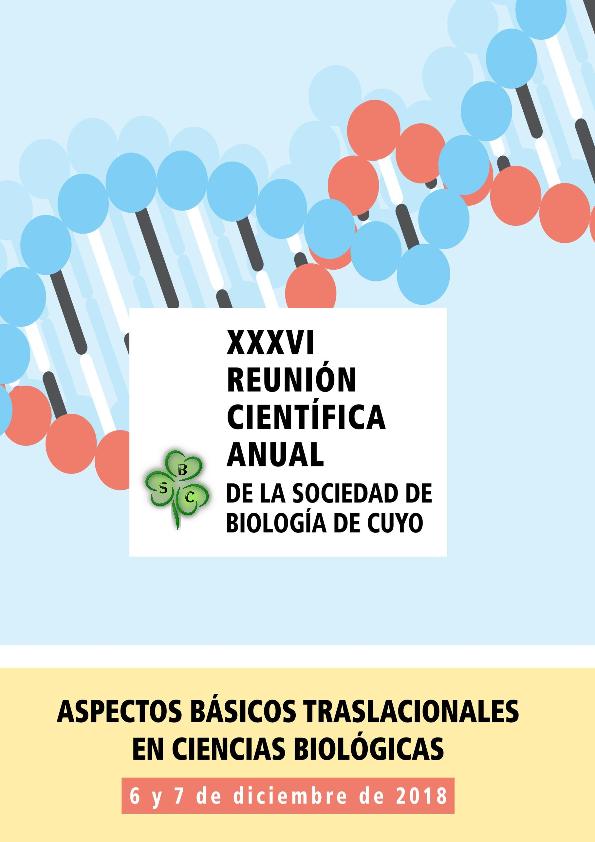Mostrar el registro sencillo del ítem
dc.contributor.author
Rosales, Gabriela Judith

dc.contributor.author
Filippa, Veronica Palmira

dc.contributor.author
Pérez, Edith
dc.contributor.author
Rodríguez, Graciela
dc.contributor.author
Mohamed, Fabian Heber

dc.date.available
2022-07-06T15:50:23Z
dc.date.issued
2019
dc.identifier.citation
Expression of gonadal hormone receptors in pars distalis and pars tuberalis of viscachas in relation to pregnancy; XXXVI Reunión Científica Anual de la Sociedad de Biología; Mendoza; Argentina; 2018; 58-58
dc.identifier.uri
http://hdl.handle.net/11336/161427
dc.description.abstract
In mammals, parsdistalis (PD) is the anterior pituitary region mainly involved in the regulation of metabolism, growth and reproduction. Pars tuberalis (PT) has long been thought to be a support for the PD, supplementing endocrine output during times of high demand. Recently it has been shown that PT plays a role in the regulation of reproductive mechanisms. Estrogen and androgen receptors (ERα, AR) are expressed in both pituitary regions and they are sensitive to the variation of gonadal steroids. The aim of this work was to study the expression of ERα and AR in pituitary PD and PT of non-pregnant and pregnant viscachas, and to relate it to the serum levels of estrogens and androgens. Non-pregnant (NP) viscachas pituitaries of and pregnant from early pregnancy (EP), mid-pregnancy (MP) and late pregnancy (LP) (n=4 per group) were processed for light microscopy. ERα and AR were detected by immunohistochemistry and morphometrically quantified by image analysis. The labeled nuclei and cytoplasm were counted and expressed as a percentage of the total number of cells per microscopic field. The values were expressed as mean ± SEM. The serum levels of estradiol and testosterone were determined by radioimmunoassay. In PD, the immunostaining pattern for ERα and AR was nuclear (n) and cytoplasmic (c). The %ERαn-immunoreactive (-ir) cells in PD increased significantly in LP mainly in the medial and ventral regions. The %ERαc-ir cells did not differ significantly among different groups and were distributed throughout parenchyma. %ARn-ir cells and %ARc-ir cells did not vary significantly in relation to the reproductive status. ARn-ir cells were numerous in the medial region and caudal end. In PT, the immunostaining pattern for ERα and AR was only nuclear.The %ERαn-ir was not statistically significant variationsbetween the groups studied, but %ARn-ir cells increased during LP.The ERαn-ir cells were observed mainly in the upper end of the caudal region in NP and MP animals. The AR-ir cells were observed in all the groups studied, they were located in the caudal zone of PT. Estradiol and testosterone serum levels were higher during MP compared to other groups. These results demonstrated that in PD the increase of ER is after the estradiol serum peak, whereas the expression of AR does not vary with the variations of testosterone serum levels. However, in PT the expression of ER appears to be independent of estradiol levels and AR increases after the maximum levels of serum testosterone. It is likely that these differences are related to the presence of specific cell populations and the function of both receptors in each adenohypophyseal portion.
dc.format
application/pdf
dc.language.iso
eng
dc.publisher
Universidad Nacional de Cuyo

dc.rights
info:eu-repo/semantics/openAccess
dc.rights.uri
https://creativecommons.org/licenses/by-nc-sa/2.5/ar/
dc.subject
HORMONE RECEPTORS
dc.subject
PITUITARY
dc.subject
VISCACHA
dc.subject
PREGNANCY
dc.subject.classification
Biología Reproductiva

dc.subject.classification
Ciencias Biológicas

dc.subject.classification
CIENCIAS NATURALES Y EXACTAS

dc.title
Expression of gonadal hormone receptors in pars distalis and pars tuberalis of viscachas in relation to pregnancy
dc.type
info:eu-repo/semantics/publishedVersion
dc.type
info:eu-repo/semantics/conferenceObject
dc.type
info:ar-repo/semantics/documento de conferencia
dc.date.updated
2022-06-30T19:24:33Z
dc.journal.pagination
58-58
dc.journal.pais
Argentina

dc.journal.ciudad
Mendoza
dc.description.fil
Fil: Rosales, Gabriela Judith. Consejo Nacional de Investigaciones Científicas y Técnicas. Centro Científico Tecnológico Conicet - San Luis; Argentina. Universidad Nacional de San Luis. Facultad de Química, Bioquímica y Farmacia; Argentina
dc.description.fil
Fil: Filippa, Veronica Palmira. Consejo Nacional de Investigaciones Científicas y Técnicas. Centro Científico Tecnológico Conicet - San Luis; Argentina. Universidad Nacional de San Luis. Facultad de Química, Bioquímica y Farmacia; Argentina
dc.description.fil
Fil: Pérez, Edith. Universidad Nacional de San Luis. Facultad de Química, Bioquímica y Farmacia; Argentina
dc.description.fil
Fil: Rodríguez, Graciela. Universidad Nacional de San Luis. Facultad de Química, Bioquímica y Farmacia; Argentina
dc.description.fil
Fil: Mohamed, Fabian Heber. Universidad Nacional de San Luis. Facultad de Química, Bioquímica y Farmacia; Argentina
dc.relation.alternativeid
info:eu-repo/semantics/altIdentifier/url/https://sbcuyo.org.ar/libro-de-resumenes-2018/
dc.conicet.rol
Autor

dc.conicet.rol
Autor

dc.conicet.rol
Autor

dc.conicet.rol
Autor

dc.conicet.rol
Autor

dc.coverage
Nacional
dc.type.subtype
Reunión
dc.description.nombreEvento
XXXVI Reunión Científica Anual de la Sociedad de Biología
dc.date.evento
2018-12-06
dc.description.ciudadEvento
Mendoza
dc.description.paisEvento
Argentina

dc.type.publicacion
Book
dc.description.institucionOrganizadora
Sociedad de Biología de Cuyo
dc.source.libro
Libro de resúmenes de la XXXVI Reunión Científica Anual de la Sociedad de Biología de Cuyo
dc.source.revista
Biocell
dc.date.eventoHasta
2018-12-07
dc.type
Reunión
Archivos asociados
